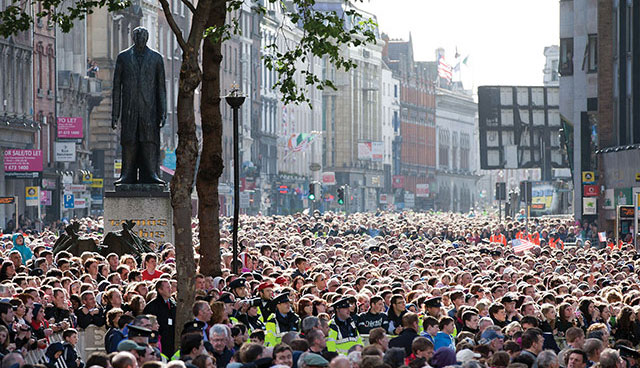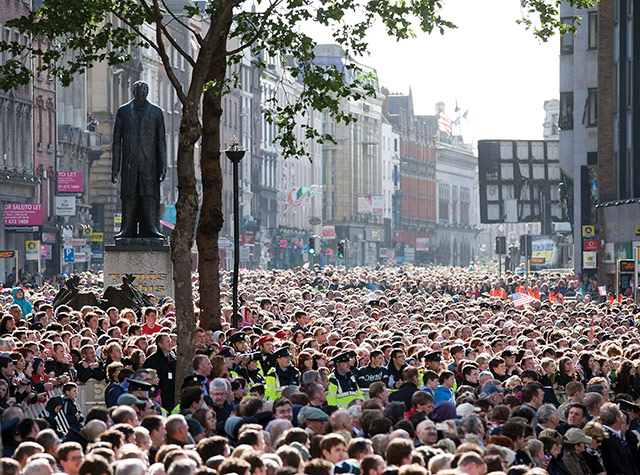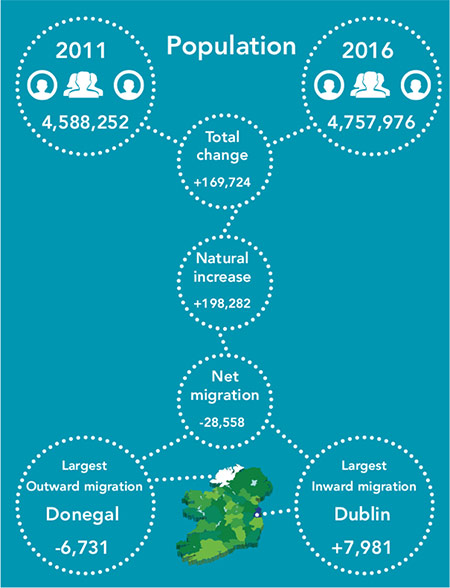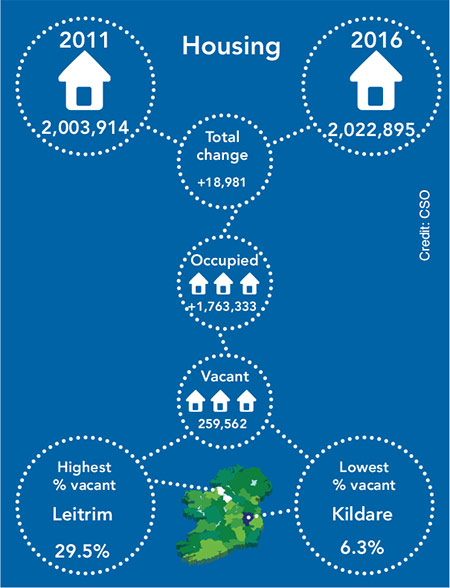Census 2016


Census 2016 has revealed further population growth across Ireland, bringing with it a raft of challenges for infrastructure and service provision. Figures elucidate the growing housing crisis in the east while areas of the west experience renewed outward migration.
Preliminary findings from the Central Statistics Office record a 3.7 per cent growth in the State’s population which now sits at 4,757,976. This equates to an increase of 169,724 individuals since the CSO’s last census report in 2011. Initial figures indicate a net migration of
-28,558 and a natural increase (birth rate minus death rate) of 198,282. This proliferation has been felt, at least marginally, in 31 of the 34 council areas.
However, for the first time since 1991, a pattern of decline has emerged across the west coast, with Donegal (-1.5), Sligo (-0.1) and Mayo (-0.2) affected. Similarly, neighbouring counties Leitrim and Roscommon witnessed population growth of less than 1 per cent. Former Maynooth sociologist Micháel Mac Gréil labels these changes as “sad and predictable”. In order to curtail further depopulation of the west, Mac Gréil argues: “front-loading infrastructure such as the Western Rail Corridor is crucial.”
Clare and Galway county proved exceptions to the rule in Connacht with an increase of 1.2 and 2.2 per cent respectively. Meanwhile, Galway city, which had an influx of 5.3 per cent, was one of five urban centres (the others being Dublin, Cork, Limerick and Waterford) to exceed the growth of their surrounding counties. In a previous study titled Quo Vadimus, Mac Gréil refers to such development as the ‘Galway factor’ and warns against the growth of urban areas at the expense of smaller rural communities.
Growth
The four administrative areas of Dublin have continued in a predictable pattern of population expansion and of the country’s 10 fastest growing electoral districts seven are situated in Dublin. The gravitational pull of Dublin has resulted in the surrounding commuter belt experiencing a continued population overspill with commuter towns in counties Meath, Kildare and Laois – namely Navan, Maynooth and Portlaoise – each accounting for one of these remaining electoral districts. Of Dublin’s four local authorities, Fingal County Council underwent the most significant population increase. An influx of 8.1 per cent into Fingal produced a nationwide range of 10.3 per cent when compared with Donegal which has suffered an outward migration of 6,731 people since 2011.
Piaras Mac Éinrí, a UCC academic specialising in migration studies summarises: “It’s a very mixed picture, we can see that parts of the country are reviving, but equally there are other places where there is an ongoing pattern of steady decline. We have a two-tier recovery.”
In spite of what appears to be a clear widening of the gulf between east and west, director of the All-Ireland Research Observatory at NUIM, Justin Gleeson notes a decline in rural and outlying areas “in every county across the country”.

Challenges
While population decline poses obvious problems for service delivery in isolated regions frequently occupied by an aging population, there are mirror challenges to be met in more populous areas facing a new influx of young inhabitants. Gleeson calculates: “If you roll forward 10 years there is a wave of people heading towards third-level education, and it’s going to take work to ensure universities and educational institutions are equipped to manage this.”

Housing
The CSO’s first housing findings since 2006 also illustrate a decline in the number of unoccupied homes across the country, most significantly in Dublin and Carlow. Brendan Murphy, a statistician with the CSO, clarifies: “While the number of holiday homes has increased marginally, the number of other vacant dwellings has decreased by almost 14 per cent since April 2011, or 31,700 units.”
Overall, findings show that there are now 2,022,895 dwellings in Ireland (an increase of 18,981 since 2011) and of these 1,763,333 are occupied. Excluding an increase of 1,809 holiday homes across the country, the current number of vacant dwellings sits at 259,562, down by 29,889 (13.8 per cent), with the highest percentage of vacancies in Leitrim (29.5 per cent). Simultaneously there has been a three per cent increase in the number of occupied households (49,285) with the lowest percentage of vacancies in Kildare (6.3 per cent). As such, the initial findings of the census indicate that household formation has been outstripped by population increases in the intercensal period between 2011 and 2016.
Justin Gleeson comments: “When you look at the Dublin areas and the commuter areas there has been a big increase in population but the housing doesn’t seem to be there to support it, and that’s borne out in the very low vacancy rates.” He continues: “All of this points to pressure in the housing market and difficulties getting people access to suitable housing down the line.”
While the population increase has been less substantial than in previous censuses over the preceding decade, Gleeson suggests: “We’ve heard a lot about emigration over the last number of years, but it seems from this data that emigration maybe hasn’t been as big as we thought.” However, the CSO has advised that a complete picture will become more apparent with the release of the full census analysis in March 2017.





